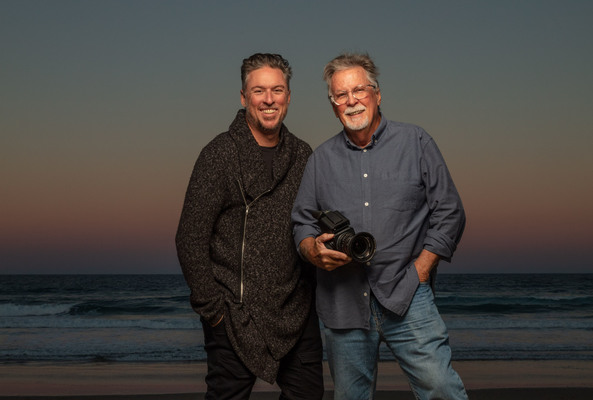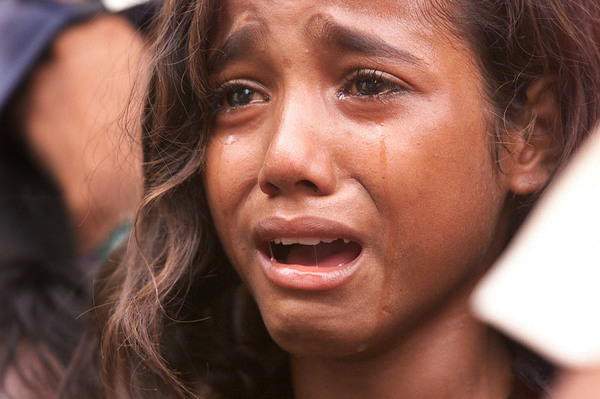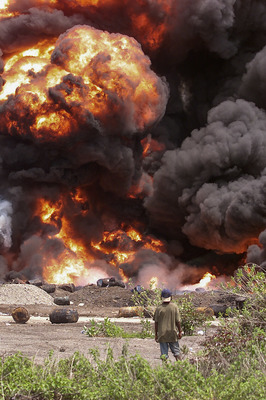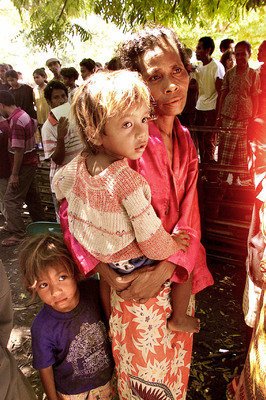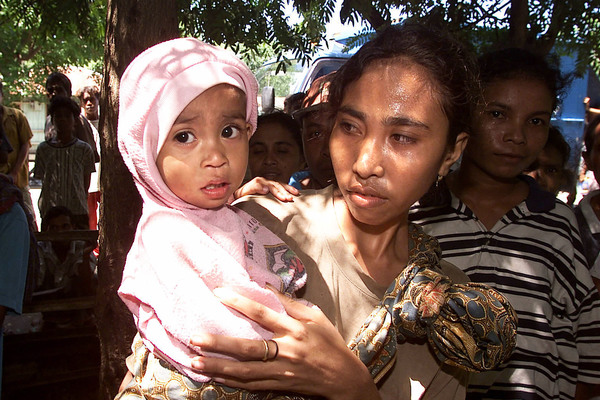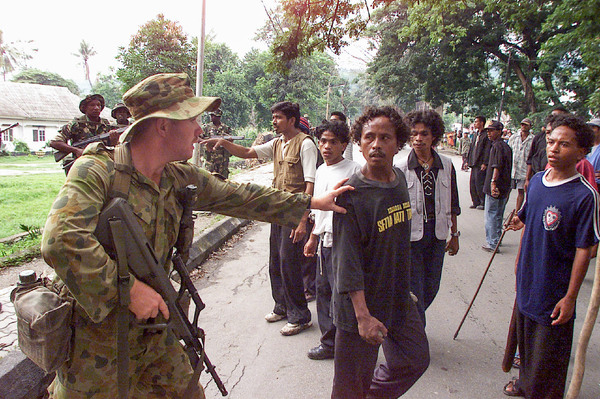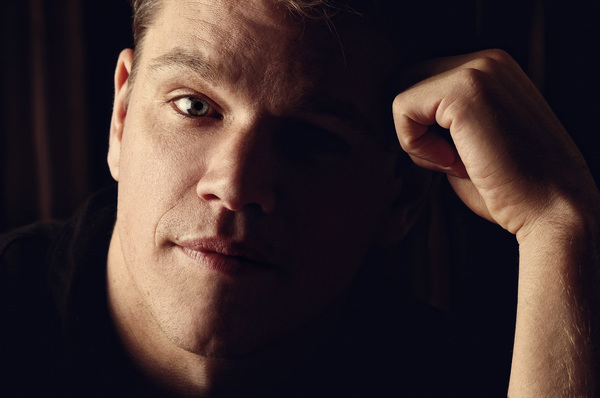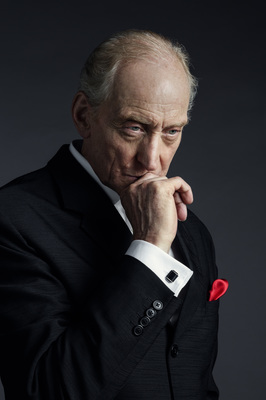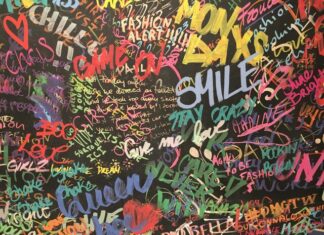Rob Maccoll used to be a fashion photographer. Studios filled with glamorous models extravagant clothes and loads of makeup dominated his world.
Then in 1999 the picture editor of the Courier Mail, where Rob worked at the time, needed someone to urgently go to East Timor.
It seemed no one else in photographic was keen to go to a conflict zone so he went.
Last week marked 20 years since Timor Leste voted overwhelmingly for independence from Indonesian occupation. Violence escalated following the vote and Rob arrived in the country after the arrival of peace-keeping forces.
Rob, his photographic equipment and food supplies, were dropped at the end of the tarmac in Dili by an RAAF C130 Hercules aircraft, and he faced a scene straight out of ‘Apocalypse Now’ with helicopters, troops, dust and confusion.
“I didn’t have a clue what I was doing. I was rescued from this by Harry Burton a tall lanky bloke born in Brisbane. He was a cameraman with Reuters and had followed his girlfriend journalist to Dili,“ he said.
Within two years Harry would be dead. Killed in a roadside ambush in Afghanistan.
“I learnt a lot from Harry and the other journos, cammos and snappers and my world, as I knew it changed.
“I’d never met a more dedicated bunch of people eager to get to the bottom of a story and tell the world what was really happening in a very confusing environment.
They would go to extraordinary lengths and great personal danger to follow up a lead with many of them suffering in the process
. “I joined up with journalist Carmel Egan who had written a story about missing people. “
East Timor’s most accurate census, based on the number of adults registered to vote in the independence referendum, put the population at 850,000 in August but, by mid-October, one in every 10 was missing.
After the story was published they were approached by NGOs who said that these people were in militia-controlled camps across West Timor and because they hadn’t been officially recognised they were receiving very little aid and hundreds had died from malaria and dysentery
. What was needed was photographic evidence to force the government to let aid into the country.
“We took off the next day and were smuggled across the border in a series of cars and trucks with all our gear hidden, knowing that if we were discovered, the outcome wouldn’t have been pleasant,“ Rob said.
“We travelled across the west from camp to camp where we found thousands of people in appalling conditions. The camps were full of makeshift tents and huts surrounded by mud and debris with no visible sanitation. The areas were stinking hot and full of disease and squalor.
“We didn’t stay too long at each place, trying to keep one step ahead of the authorities. “
The next day our story showing what was really happening was on front pages of newspapers across Australia and followed up by the worlds media including BBC and CNN. The exposure forced the government to allow the United Nations to bring in aid and medical supplies.
Years later Rob was told by a member of the UN who had helped facilitate the trip that the pictures and story had saved thousands of lives.
“East Timor changed me as those kind of assignments change everyone who undertakes them,” he said.
“Harry wasn’t the only friend who never came back and others have been struck down with illness and mental health issues. I never shot fashion for the paper again.”
Rob began his career with ABC TV as a video cameraman and stills photographer.
Ten years later he joined the Australian Information Service (AIS) in Sydney documenting Australian lifestyle, events and overseas humanitarian aid projects. He was also an official photographer of visiting dignitary such as world leaders and members of the Royal family including the Queen, Prince Phillip, Prince Charles and Princess Diana.
In 1988 he moved back to Brisbane and joined News Corp. After witnessing the power of an image to change lives, he shifted his focus to making a difference by documenting major incidents, disasters and conflict. He travelled to war zones in Iraq and Afghanistan and the scene of terrorist bombings in Bali and Jakarta. His photos uncovered the AIDS epidemic and violence in PNG and brought home the devastating effects of the tsunamis in Phuket, Aceh and Ghizo and the floods and cyclones closer to home. In 2014 he attended the G20 to photograph world leaders including Barack Obama, Angela Merkel, Vladimir Putin and Xi Jinping.
His images have been recognised with a number of awards.
In 2000 he won the Walkley Award, Australia’s highest award for photojournalism, for his images of the conflict in East Timor.
In 2004 he received the United Nations Association Media Peace Award for exposing the ravages of the HIV/AIDS epidemic in Papua New Guinea.
He has been recognised with six Queensland Media/ Clarion Awards and in the past two years picked up three Queensland Country Press Association awards for images contributed to Noosa Today.
About five years ago Rob left News Corp and moved to Noosa where he now works with his son Andrew Maccoll in their media production house Saturate Studio. Clients include Apple, IBM, Toms, Dior, Bvlgari and Thomas Surfboards
Also a photographer as well as a creative director Andrew started his career in News before moving to celebrity and high end fashion photography in Melbourne and Sydney. He has taken portraits of many famous faces including actors Matt Damon, Robert De Niro, Pink and Charles Dance which along with his fashion and wedding photos have graced the pages of well-known magazines. He has three portraits in the Australian National Portrait Gallery. He has also been honoured by the Hasselblad Masters as one of the top ten photographers in his field globally. In 2010 he was announced as one of Australia’s top ten photographers in both fashion and advertising by Capture Magazine. In 2017 he partnered with Huawei and Leica to evolve awareness and revolutionise smartphone photography. To see more images or contact Rob or Andrew visit www.robmaccoll.com or www.saturate.studio

